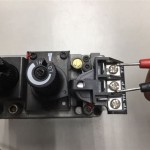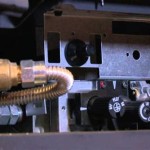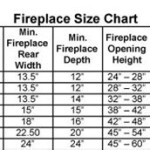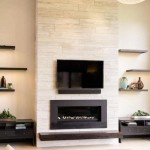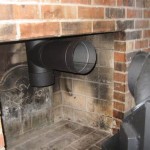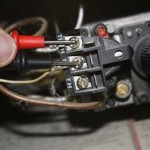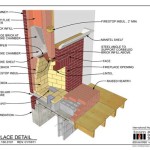How to Clean Your Fireplace: A Comprehensive Guide
Maintaining a fireplace involves more than just enjoying its warmth and ambiance. Regular cleaning is crucial for safety, efficiency, and extending the lifespan of the fireplace and chimney. Creosote buildup, soot accumulation, and debris can pose significant fire hazards and hinder proper ventilation. This article provides a detailed guide on how to clean your fireplace effectively and safely.
Safety Precautions Before Cleaning
Prior to initiating any cleaning procedure, several safety precautions must be observed. First, ensure the fireplace has not been used for at least 12 hours, ideally 24 hours, to allow ample cooling time. This minimizes the risk of burns from residual heat within the firebox. Next, gather all necessary protective gear. This includes heavy-duty work gloves, safety glasses or goggles, and a dust mask or respirator. Creosote and soot can irritate the skin, eyes, and respiratory system. Wear old clothes or a dedicated cleaning outfit to avoid staining good garments.
Protect the surrounding area by laying down drop cloths or old sheets to prevent soot and ash from spreading onto carpets and furniture. Open windows and doors to provide adequate ventilation while cleaning, further minimizing the inhalation of airborne particles. Finally, disconnect any electrical components associated with the fireplace, such as gas starters or electric blowers, before commencing the cleaning process. This prevents accidental shocks or damage to the electrical system.
Gathering the Necessary Cleaning Tools and Materials
A well-equipped cleaning arsenal is essential for efficient and thorough fireplace maintenance. A stiff-bristled brush or broom is crucial for sweeping out loose ash and debris from the firebox. A metal shovel or ash shovel is necessary for scooping out accumulated ash. A vacuum cleaner with a hose attachment is highly recommended for sucking up fine dust and soot that the brush may miss. Ensure the vacuum cleaner has a HEPA filter to trap fine particles and prevent them from being recirculated into the air. A putty knife or scraper can be used to dislodge stubborn creosote buildup from the firebox walls.
For chimney cleaning, a chimney brush is indispensable. The brush should be sized appropriately for the chimney flue. Chimney brushes typically come in round or square shapes, depending on the flue's geometry. A set of chimney rods is required to push the brush up the chimney. These rods are usually threaded and can be connected to extend the brush's reach. A flashlight or headlamp is useful for inspecting the chimney flue for obstructions and assessing the level of creosote buildup. Depending on the severity of creosote accumulation, a chemical creosote remover may also be needed. Follow the manufacturer's instructions carefully when using such products.
Step-by-Step Cleaning Procedure for the Firebox
The first step in cleaning the firebox involves removing the bulk of the ash and debris. Using the metal shovel, carefully scoop the ash into a metal bucket or container. Ensure the container is fireproof and has a tight-fitting lid to prevent the ash from scattering. Dampen the ash slightly with water to further minimize dust dispersal. Dispose of the cooled ash properly, following local regulations. In many areas, ash can be added to compost piles or used as a soil amendment, but it is crucial to ensure the ash is completely cold and free of embers before disposal.
Next, use the stiff-bristled brush or broom to sweep out any remaining ash, soot, and debris from the firebox floor and walls. Pay attention to corners and crevices where soot tends to accumulate. Use the putty knife or scraper to dislodge any hardened creosote deposits from the firebox walls. Exercise caution to avoid damaging the firebricks or the firebox structure. After sweeping and scraping, use the vacuum cleaner with the hose attachment to suction up any remaining fine dust and soot. This will ensure a thoroughly clean firebox.
Clean the firebox glass door, if applicable. Use a specialized fireplace glass cleaner or a mixture of vinegar and water to remove soot and grime. Apply the cleaner to the glass and allow it to sit for a few minutes to loosen the deposits. Then, scrub the glass with a soft cloth or sponge and wipe clean with a dry cloth. Avoid using abrasive cleaners or scrub pads, as they can scratch the glass. For particularly stubborn stains, a razor blade scraper can be used with extreme care, holding it at a shallow angle to the glass to avoid scratching.
Cleaning the Chimney Flue
Cleaning the chimney flue is a more involved process that requires access to the chimney either from the roof or the firebox. From the roof, carefully position the chimney brush at the top of the flue. Connect the first chimney rod to the brush. Push the brush down the flue, adding additional rods as needed to reach the bottom. Use a twisting motion to scrub the flue walls and dislodge creosote buildup. Continue pushing and twisting the brush until it reaches the bottom of the chimney. Be prepared for a significant amount of soot and debris to fall into the firebox.
If cleaning from the firebox, insert the chimney brush up the flue, connecting rods as needed. Use the same pushing and twisting motion to scrub the flue walls. In both cases, it is helpful to have a helper at the other end of the chimney to monitor the progress and ensure the brush is effectively cleaning the entire flue. After scrubbing the flue, remove the brush and rods, carefully collecting any loose creosote and soot. Inspect the flue with a flashlight to ensure it is thoroughly clean and free of obstructions.
If using a chemical creosote remover, apply it according to the manufacturer's instructions. These products typically work by modifying the creosote, making it easier to remove during subsequent cleaning. Some creosote removers can be applied by burning a treated log in the fireplace, while others are sprayed directly into the flue. Follow the instructions precisely and allow the recommended time for the product to work before attempting to clean the flue manually.
Post-Cleaning Inspection and Maintenance
After cleaning the firebox and chimney, a thorough inspection is crucial to identify any potential problems. Check the firebricks for cracks or damage. Replace any broken or crumbling firebricks to maintain the firebox's structural integrity and insulation. Inspect the damper for proper operation. Ensure it opens and closes smoothly and seals tightly when closed to prevent drafts and heat loss.
Examine the chimney for any signs of damage, such as cracks in the brickwork, loose mortar, or spalling. These issues can compromise the chimney's structural integrity and allow water to seep in, causing further damage. If any significant damage is detected, consult a qualified chimney professional for repairs. It is generally recommended to have a professional chimney sweep inspect the chimney annually to ensure it is in good working order and free of hazards. A professional sweep can also provide expert advice on proper fireplace maintenance and operation.
Check the surrounding area for any soot or ash that may have escaped during the cleaning process. Vacuum or wipe clean any affected surfaces. Replace the drop cloths or old sheets with clean ones. Finally, store the cleaning tools and materials in a designated area, ready for the next cleaning. Regular cleaning, combined with proper inspection and maintenance, will ensure the fireplace remains a safe, efficient, and enjoyable feature of the home.

How To Clean A Fireplace Diy Basics

How To Clean A Fireplace The Home Depot

Fireplace Cleaning Tutorial Kippi At Home

Best Way To Clean A Fireplace Stacy Risenmay

How To Clean Brick Fireplaces Mantels Hearths And More My Space

How To Clean A Fireplace With Bar Keepers Friend

How To Clean A Gas Fireplace The Proper Way

How To Clean Fireplace Bricks 9 Steps With S Wikihow

How To Clean A Chimney The Home Depot

Chimney Sweep Cleaning Wethersfield Glastonbury Hebron Farmington
Related Posts

